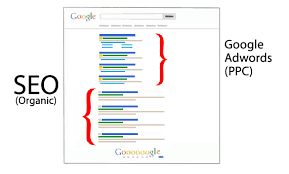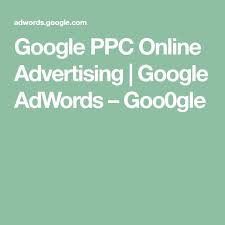Google AdWords SEO: Boosting Your Online Presence
In today’s digital age, having a strong online presence is crucial for businesses of all sizes. One effective way to increase your visibility and reach your target audience is through Google AdWords SEO. In this article, we will explore how Google AdWords and search engine optimization (SEO) can work together to enhance your online marketing efforts.
Google AdWords is an advertising platform developed by Google that allows businesses to create and display ads on the search engine results page. These ads are displayed based on specific keywords that users search for, making it an effective way to target potential customers who are actively looking for products or services like yours.
However, simply running ads on Google AdWords is not enough. To truly maximize your campaign’s effectiveness, you need to incorporate SEO strategies into your ad campaigns. Here’s why:
Increased Visibility: By optimizing your ad campaigns with relevant keywords and compelling ad copy, you can improve your ad’s visibility in the search results. This means that when users search for specific keywords related to your business, they are more likely to see and click on your ads.
Higher Quality Score: Google assigns a quality score to each of your ads based on various factors such as keyword relevance, landing page experience, and click-through rate (CTR). By implementing SEO techniques in your ad campaigns, you can improve these factors and ultimately achieve a higher quality score. A higher quality score not only improves the positioning of your ads but also reduces the cost per click (CPC), allowing you to get more value from your advertising budget.
Improved Landing Page Experience: When users click on your ads, they should be directed to a landing page that provides relevant and valuable information related to their search query. By optimizing your landing pages with SEO best practices such as clear headlines, concise content, user-friendly navigation, and compelling calls-to-action (CTAs), you can enhance the overall user experience and increase the chances of conversion.
Long-Term Organic Traffic: While Google AdWords provides immediate visibility and results, it is important to remember that it is a paid advertising platform. Once you stop running ads, your visibility diminishes. However, by incorporating SEO techniques into your ad campaigns, you can also improve your organic search rankings. This means that even after you stop running ads, your website can continue to attract organic traffic from search engine users.
To effectively leverage Google AdWords SEO, consider the following tips:
Keyword Research: Conduct thorough keyword research to identify relevant keywords with high search volumes and low competition. Use these keywords in your ad campaigns and optimize your landing pages accordingly.
Compelling Ad Copy: Write compelling and concise ad copy that incorporates your target keywords. Highlight unique selling points and include a strong call-to-action to encourage clicks.
Landing Page Optimization: Ensure that your landing pages are optimized for both users and search engines. Use relevant keywords in page titles, meta descriptions, headings, and content. Make sure the page loads quickly and is mobile-friendly.
Regular Monitoring and Testing: Continuously monitor the performance of your ad campaigns and make necessary adjustments based on data insights. Test different ad variations, landing pages, and targeting options to optimize your results.
In conclusion, Google AdWords SEO is a powerful combination that can significantly boost your online presence and drive targeted traffic to your website. By incorporating SEO techniques into your ad campaigns, you can improve visibility, increase quality scores, enhance user experience on landing pages, and even achieve long-term organic traffic growth. Invest time in understanding how Google AdWords works alongside SEO principles to maximize the effectiveness of your online marketing efforts.
5 Essential Tips for Optimizing Google AdWords SEO
- Research Keywords
- Create Relevant Ads
- Optimize Landing Pages
- Track & Monitor Performance
- Test & Refine Strategies
Research Keywords
Research Keywords: The Key to Successful Google AdWords SEO
When it comes to running effective Google AdWords campaigns, one of the most important steps is keyword research. Keywords are the foundation of any successful SEO strategy, and they play a crucial role in optimizing your ad campaigns for maximum visibility and reach.
Keyword research involves identifying and selecting the right keywords that are relevant to your business, products, or services. These are the words or phrases that potential customers are likely to use when searching for information related to what you offer.
By conducting thorough keyword research, you can gain valuable insights into your target audience’s search behavior and understand the language they use. Here’s why keyword research is so important in Google AdWords SEO:
Relevance: Choosing relevant keywords ensures that your ads appear in front of the right audience. When your ads align with what users are searching for, it increases the chances of attracting qualified leads who are more likely to convert into customers.
Competition Analysis: Keyword research allows you to analyze the competitiveness of different keywords. You can identify high-volume keywords with low competition, giving you a better chance of ranking higher in search results without spending a fortune on bidding.
Budget Optimization: By targeting specific keywords that have lower competition and cost-per-click (CPC), you can optimize your budget and get more value from your advertising spend. This means you can reach a larger audience without breaking the bank.
Long-Tail Keywords: Researching long-tail keywords – longer, more specific phrases – can help you capture highly targeted traffic. While these keywords may have lower search volumes individually, they often have higher conversion rates as they indicate more specific user intent.
To conduct effective keyword research for Google AdWords SEO:
Brainstorm: Start by brainstorming a list of relevant topics and terms related to your business. Think about what your customers might search for when looking for products or services like yours.
Keyword Planner: Utilize Google’s Keyword Planner tool to discover new keywords, get search volume data, and understand keyword trends. This tool provides valuable insights and suggestions for optimizing your ad campaigns.
Competitor Analysis: Analyze your competitors’ websites and ads to identify the keywords they are targeting. This can help you uncover new opportunities and refine your own keyword strategy.
Refine and Expand: Continuously refine your keyword list based on performance data and user behavior. Monitor which keywords are driving the most clicks, conversions, and engagement, and expand your list with new variations or related terms.
In conclusion, thorough keyword research is a fundamental step in successful Google AdWords SEO. By understanding the language of your target audience, analyzing competition, optimizing your budget, and targeting long-tail keywords, you can enhance the effectiveness of your ad campaigns and drive more qualified traffic to your website. Invest time in researching keywords to unlock the full potential of Google AdWords for your business.
Create Relevant Ads
Creating Relevant Ads: A Key to Success in Google AdWords SEO
When it comes to running successful Google AdWords campaigns, creating relevant ads is an essential aspect that should not be overlooked. In the world of digital marketing, relevance is the key to capturing your target audience’s attention and driving them towards conversion.
Relevance starts with understanding your target audience and their needs. Take the time to research and identify the keywords and phrases that your potential customers are using when searching for products or services like yours. By incorporating these keywords into your ad copy, you can ensure that your ads appear when users are actively looking for what you offer.
But relevance goes beyond just using the right keywords. It’s about crafting compelling ad copy that speaks directly to your audience’s pain points and offers a solution. Your ads should clearly communicate the unique value proposition of your business and highlight why users should choose you over your competitors.
To create relevant ads, consider the following tips:
- Be specific: Avoid generic ad copy that doesn’t provide much information. Instead, focus on being specific about what you offer and how it benefits your customers. Highlight key features, promotions, or special offers that make you stand out.
- Use dynamic keyword insertion (DKI): DKI allows you to dynamically insert the search query into your ad headline or description. This technique helps make your ads more relevant by reflecting exactly what users are searching for.
- Customize for different segments: If you have different customer segments or target audiences, consider creating separate ad groups or campaigns tailored specifically to each segment. This allows you to deliver highly targeted and relevant ads based on their specific needs.
- Test and optimize: Don’t settle for one version of an ad. Continuously test different variations of headlines, descriptions, calls-to-action (CTAs), and even visuals if applicable. Monitor their performance and optimize accordingly based on click-through rates (CTR) and conversion rates.
Remember, relevance is not just about getting clicks; it’s about attracting the right audience and driving them to take action. By creating ads that are tailored to your target audience’s needs and desires, you can increase the effectiveness of your Google AdWords campaigns and ultimately achieve better results.
In summary, creating relevant ads is a crucial aspect of Google AdWords SEO. By understanding your target audience, incorporating relevant keywords, and crafting compelling ad copy, you can increase the chances of capturing your audience’s attention and driving them towards conversion. Invest time in creating ads that resonate with your potential customers, and you’ll be on your way to achieving success in your Google AdWords campaigns.
Optimize Landing Pages
Optimize Landing Pages: The Key to Successful Google AdWords SEO
When it comes to running successful Google AdWords campaigns, optimizing your landing pages is a crucial step that should not be overlooked. Your landing page is the destination where users land after clicking on your ads, and it plays a significant role in determining the success of your campaign. Here’s why optimizing landing pages is essential for effective Google AdWords SEO.
First and foremost, optimizing your landing pages improves the user experience. When users click on your ads, they expect to find relevant and valuable information related to their search query. By aligning the content and design of your landing pages with the keywords and ad copy used in your campaigns, you provide a seamless and cohesive experience for users. This not only increases their satisfaction but also encourages them to stay longer on your website, explore further, and potentially convert into customers.
Moreover, optimized landing pages can significantly impact your quality score. Google assigns a quality score to each of your ads based on various factors, including the relevance and quality of the landing page. By ensuring that your landing pages are well-structured, load quickly, have clear headlines and concise content, use relevant keywords appropriately, and include compelling calls-to-action (CTAs), you can improve your quality score. A higher quality score leads to better ad positioning and lower costs per click (CPC), maximizing the value you get from your advertising budget.
In addition to improving user experience and quality scores, optimized landing pages also contribute to better conversion rates. When users arrive at a well-designed landing page that provides them with the information they were seeking through their search query, they are more likely to take action – whether it’s making a purchase, filling out a form, or signing up for a newsletter. By crafting persuasive copywriting and strategically placing CTAs on your optimized landing pages, you can guide users towards conversion more effectively.
To optimize your landing pages for Google AdWords SEO, consider the following tips:
- Relevance: Ensure that your landing page content aligns with the keywords and ad copy used in your campaigns. This helps maintain consistency and relevance throughout the user journey.
- Clear Headlines: Use clear and attention-grabbing headlines that clearly communicate what your landing page is about and how it benefits the user.
- Concise Content: Keep your content concise, informative, and scannable. Use bullet points, subheadings, and visuals to make it easy for users to quickly grasp key information.
- User-Friendly Design: Create a clean and visually appealing design that is easy to navigate on both desktop and mobile devices. Make sure your landing pages load quickly to prevent users from bouncing off.
- Compelling CTAs: Place persuasive CTAs throughout your landing pages to encourage users to take the desired action. Use action-oriented language and create a sense of urgency when appropriate.
Remember to continuously monitor the performance of your landing pages, analyze user behavior through analytics tools, and make necessary adjustments based on data insights. By optimizing your landing pages, you can enhance the overall effectiveness of your Google AdWords campaigns, improve user experience, increase conversion rates, and ultimately achieve better results for your business.
Track & Monitor Performance
Track & Monitor Performance: The Key to Successful Google AdWords SEO
When it comes to running effective Google AdWords campaigns, one crucial aspect that should never be overlooked is tracking and monitoring performance. Tracking and monitoring the performance of your ads allows you to gain valuable insights into their effectiveness, make data-driven decisions, and ultimately optimize your Google AdWords SEO strategy for success.
By tracking and monitoring the performance of your ads, you can:
- Measure Key Metrics: Tracking metrics such as click-through rate (CTR), conversion rate, cost per click (CPC), and return on investment (ROI) provides you with a clear understanding of how well your ads are performing. These metrics help you identify areas for improvement and make informed decisions on where to allocate your advertising budget effectively.
- Identify High-Performing Keywords: Monitoring keyword performance enables you to identify which keywords are driving the most clicks, conversions, and revenue. By focusing on these high-performing keywords, you can optimize your ad campaigns further by increasing bids or refining ad copy for better results.
- Discover Underperforming Ads: Through careful monitoring, you can identify ads that are not performing up to expectations. By analyzing the data, you can pinpoint areas for improvement such as adjusting ad copy, testing different variations, or optimizing landing pages. Continuous monitoring allows you to make timely adjustments to enhance the overall effectiveness of your campaigns.
- Understand User Behavior: Tracking user behavior on your website after they click on an ad provides valuable insights into how users interact with your site. By using tools like Google Analytics in conjunction with Google AdWords, you can gain a deeper understanding of user engagement, bounce rates, time spent on site, and conversion paths. This information helps you refine your landing pages and improve the user experience to increase conversions.
- A/B Test for Optimization: Monitoring performance allows you to conduct A/B tests to compare different variations of ads or landing pages. By testing different elements, such as headlines, call-to-action buttons, or visuals, you can identify what resonates best with your audience and optimize your campaigns accordingly.
To effectively track and monitor the performance of your Google AdWords campaigns:
– Utilize tracking tools provided by Google AdWords, such as conversion tracking and Google Analytics integration.
– Set up goals and conversion tracking to measure specific actions taken by users on your website.
– Regularly review performance reports and analyze data to identify trends and areas for improvement.
– Continuously test and experiment with different ad variations, landing pages, targeting options, or bidding strategies to optimize results.
Remember, tracking and monitoring performance is an ongoing process. By regularly reviewing and analyzing data insights, you can make informed decisions that drive continuous improvement in your Google AdWords SEO strategy. Stay proactive in monitoring performance to ensure that your ads are delivering the desired results and maximizing the return on your advertising investment.
Test & Refine Strategies
One of the key elements to success in Google AdWords SEO is the ability to test and refine your strategies. Testing allows you to gather valuable data and insights that can help you optimize your campaigns for better performance and results.
When it comes to testing, there are several areas you can focus on:
- Ad Copy: Experiment with different variations of ad copy to see which ones resonate best with your target audience. Test different headlines, descriptions, and calls-to-action to find the most compelling combination.
- Keywords: Test different keywords and keyword match types to see which ones drive the most relevant traffic and conversions. Use tools like Google’s Keyword Planner to identify new keyword opportunities and refine your targeting.
- Landing Pages: A well-optimized landing page can significantly impact your conversion rates. Test different layouts, designs, content placements, and CTAs on your landing pages to determine what drives the best results.
- Bidding Strategies: Test different bidding strategies such as manual bidding or automated bidding options like target CPA or target ROAS. Monitor the performance of each strategy and adjust accordingly based on your campaign goals.
- Targeting Options: Explore different targeting options available in Google AdWords such as location targeting, device targeting, or demographic targeting. By testing various combinations, you can identify which settings work best for reaching your ideal audience.
Remember that testing should be an ongoing process. Continuously monitor the performance of your campaigns and make data-driven decisions based on the results you gather. Keep track of key metrics like click-through rate (CTR), conversion rate, cost per click (CPC), and return on ad spend (ROAS) to evaluate the effectiveness of your strategies.
Refining your strategies based on testing results is equally important. Analyze the data collected during testing phases and make adjustments accordingly. This could involve pausing underperforming ads or keywords, optimizing landing pages further, or reallocating budget towards more successful campaigns.
By consistently testing and refining your strategies in Google AdWords SEO, you can optimize your campaigns for better performance, increase your return on investment (ROI), and ultimately achieve your marketing goals. Embrace a mindset of continuous improvement and adaptability to stay ahead in the ever-changing digital landscape.



